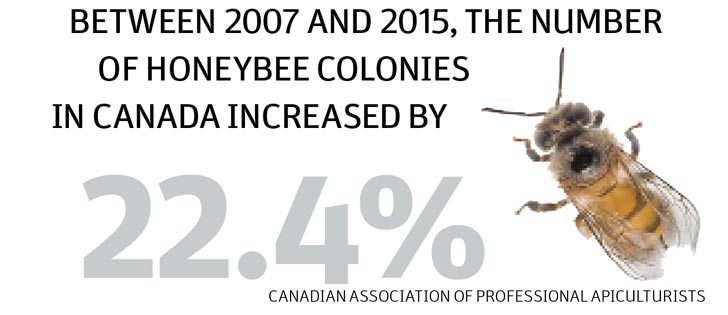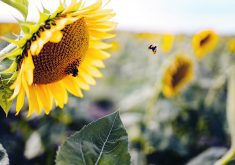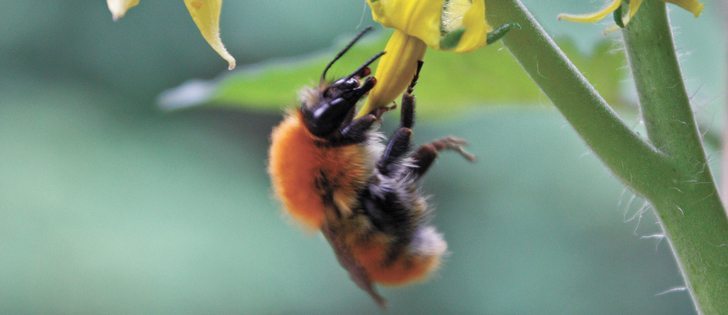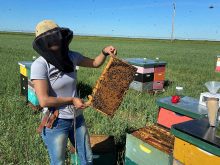Canadian beekeepers lost 16.8 percent of their colonies in the winter of 2015-16, which is one of the lowest rates of winter loss in recent history.
Meanwhile, American beekeepers lost 44 percent of their hives, based on a survey of U.S. apiarists.
The numbers suggest Canada’s beekeeping industry is in good shape while the Americans are struggling with a “beepocalypse,” but a U.S. bee expert says the story is more complicated.
The Canadian Association of Professional Apiculturists publishes a report on honeybee winter losses in July, compiled from a survey of beekeepers.
Read Also

Manitoba community projects get support from HyLife
HyLife Fun Days 2025 donated $35,000 each to recreation and housing projects in Killarney, Steinach and Neepawa earlier this fall.
This year it showed that bee health and colony management is improving in Canada. Losses have dropped from more than 30 percent in the late 2000s to less than 20 percent the last couple of years.
The association said provincial apiculturists have been encouraging beekeepers to improve their hive management, such as monitoring honeybee pests like varroa mites.
Dennis van Engelsdorp, a University of Maryland entomologist, said winter losses have also declined in the United States.
Winter bee losses in the U.S. were 30 to 35 percent from 2006-10, based on survey data from the Bee Informed Partnership, a collaboration of bee research labs in the U.S.
The annual winter loss in the U.S. has dropped to 25 percent over the last five years, which is slightly higher than Canadian figures.
However, the Canadian survey only looks at winter losses, while the American survey tracks winter and summer losses of U.S. honeybee colonies.
“Certainly winter losses have decreased over our 10 years of monitoring, but it seems like our summer losses have increased,” said van Engelsdorp, who is the project director for the Bee Informed Partnership.
Colonies dying during the summer have propelled total U.S. losses to 40 percent and higher in three of the last four years.
A bar graph on the Bee Informed website clearly illustrates that more bee colonies are dying in the summer.
Van Engelsdorp said the cause of summer deaths remains a mystery.
“We don’t know…. It certainly could be virus and varroa (related),” said van Engelsdrop, a Canadian who studied at the University of Guelph.
“But it also suggests other things…. Not enough nutrition in the landscape… and pesticides are probably contributing to those summer losses.”
Varroa mites, an invasive species, have been present in American hives longer than they’ve been in Canada.
As a result, viruses carried by varroa mites have mutated into more dangerous forms in the U.S., which might partially explain the summer losses.
“The (varroa) viruses have been in the United States longer (and) Canada tends to be about 10 years behind in some of (these) emerging conditions,” van Engelsdorp said.
“We’ve seen the evolution of much more virulent strains of viruses…. I wouldn’t be surprised if some of the really virulent strains of viruses, down here, aren’t yet up there (in Canada).”
Canada may not have the same bee pathogens, but beekeepers north of the border have noticed an unusual trend in the last few years.
Queen bees used to last two to three years before a beekeeper had to replace them. Now they’re not surviving as long, and beekeepers are asking why.
“I don’t know if you get a year and a half any more … so what’s going on? Why are the queens not lasting?” said Bryan Ash, a beekeeper from Gilbert Plains, Man.
Besides the lack of summertime loss data, Engelsdorp said the Canadian beekeeper survey might be skewed.
“It’s pretty clear that they (CAPA) are surveying mostly commercial beekeepers, and commercial beekeepers always lose fewer colonies,” he said.
“If you were to compare U.S. numbers and Canadian numbers … make sure that you’re comparing commercial beekeepers…. A lot of the losses that you’re seeing reported in the States are coming from the … backyard beekeepers.”
While it’s possible that Canadian bee colonies are doing better than America honeybees, van Engelsdorp said it’s unlikely related to better management.
“It’s interesting that the (loss) rates do seem lower,” he said.
“I think there are important insights there, but I don’t know whether it’s fair to say that Canadian beekeepers … are better than American beekeepers.”
















